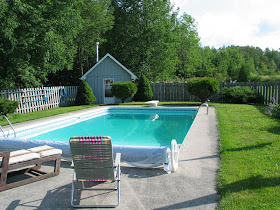
For some time, I have been looking for a small clear acrylic dome to make a sensor housing that has a semi-true spherical viewing window.
I have not completed the installation of this new version into my system but I present it here in case you would like to build your sensor housing in this way.
Although the previous version, based on the Leviton housing is satisfactory, there are three advantages to this improved approach:
● The lettering does not have to be removed
● The spherical window does not have edges which can distort the view when the sun is low.
● The Leviton housing does not seal well without the addition of a gasket under the hinged plastic cover. This new housing is completely sealed.
Above is the prototype. The clear plastic acrylic dome is cemented into the lid of a Carlon round plastic electrical box and provides a very clear window over a full 180° viewing angle. This is important to allow the sensor to see the sun rising when it is fully heeled over 100°in the opposite direction.

The clear plastic dome I found at a craft supply chain here in the local area called Michaels
http://www.michaels.com/ product number 82676963087 called “PLATC BALL CLEAR” (sic) on my sales receipt, cost $2.29. You might have to get a sales person to help you find it in a Michael’s store. They are usually huge.
They have several sizes in stock but the 80 mm seems to fit the Carlon electrical box best. If you search “Darice 1105-97” you will find the importer
http://www.darice.com/ and several sources of supply in the USA.
The Darice globe is (I'm guessing) sold as a holiday ornament, but it makes a fine solar radome.

The package actually includes two halves, a male and a female. I decided to use the male (picture above).
I used a fly cutter in a drill press so that I could very precisely fit the diameter of the lip on the Darice dome.
First, I set up the circle cutter to the approximate diameter I needed and did a test hole in a piece of scrap. I tested the fit of the dome and adjusted the cutter slightly.
When the circle diameter was correct, the Darice dome fit into the hole beautifully, just up to the lip.

I then set up for the cut in the Carlon box cover.
Note that the cover is firmly fixed to a piece of scrap and the scrap is firmly fixed to the drill press table. I am very cautious with fly cutters and drilling a hole this size in a piece of PVC was a first for me. I wanted to make sure that it didn’t get loose.
With a very very light feed on the cut, it went very smoothly and the hole produced was very clean and a perfect fit for the Darice dome.
There is a little hanger loop on the Darice dome that you can just see in the back of the picture below. I cut that off and smoothed the cut with a sharp knife and a file.
I then glued the dome into the lid. I used a clear PVC cement so that it wouldn’t show. You could use the regular grey PVC cement. I used a Q Tip to carefully spread glue all around the lip of the globe and also ran some around the inside of the circular hole in the cover.
I left it to dry for a couple hours.
Not bad!
I will fit a plate into the box to hold the LED3X with a similar pivoting support as used with the Leviton cover and mount the cinch terminal strip in the bottom of the Carlon Box.
 For some time, I have been looking for a small clear acrylic dome to make a sensor housing that has a semi-true spherical viewing window.
For some time, I have been looking for a small clear acrylic dome to make a sensor housing that has a semi-true spherical viewing window.  The clear plastic dome I found at a craft supply chain here in the local area called Michaels http://www.michaels.com/ product number 82676963087 called “PLATC BALL CLEAR” (sic) on my sales receipt, cost $2.29. You might have to get a sales person to help you find it in a Michael’s store. They are usually huge.
The clear plastic dome I found at a craft supply chain here in the local area called Michaels http://www.michaels.com/ product number 82676963087 called “PLATC BALL CLEAR” (sic) on my sales receipt, cost $2.29. You might have to get a sales person to help you find it in a Michael’s store. They are usually huge. The package actually includes two halves, a male and a female. I decided to use the male (picture above).
The package actually includes two halves, a male and a female. I decided to use the male (picture above).







